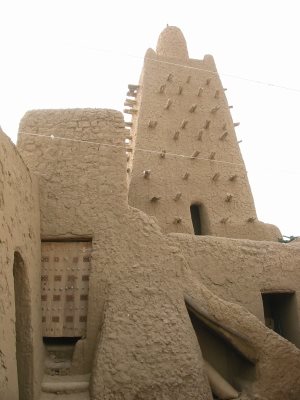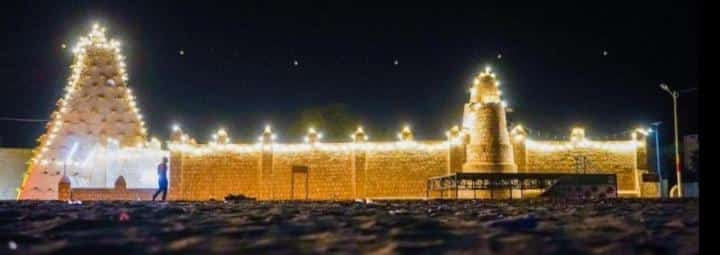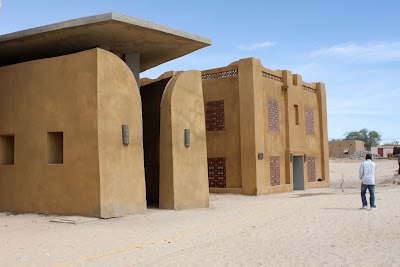Timbuktu Mosque of Sidi Yahya (Mosquée Sidi Yahya de Tombouctou)
Overview
The Sidi Yahiya Mosque, also known as the Timbuktu Mosque of Sidi Yahya, stands as an iconic symbol in the ancient city of Tombouctou, located in the Tombouctou Region of Mali. Renowned for its remarkable historical, cultural, and religious significance, this mosque draws visitors into the rich tapestry of Mali's heritage.
Constructed in 1440, the mosque was commissioned by the esteemed imam and scholar, Sheikh El-Mokhtar Hamalla. Local legends tell of a vision he received, urging him to build the mosque in honor of his disciple, Sidi Yahiya, who would become its first imam. The construction, which lasted approximately four years, was a monumental architectural undertaking for its time, reflecting the dedication to faith and learning.
What truly captivates visitors is the mosque's architectural style, a prime example of traditional Sudano-Sahelian design. This distinctive style, unique to the Sahel region of Africa, features sun-dried mud bricks, wooden support beams known as torons, and adobe plaster. The result is a striking structure characterized by earthy tones and organic contours. The protruding wooden beams not only enhance its aesthetic but also serve a practical purpose, allowing for easier maintenance of the mosque's mud layers.
Inside, the mosque boasts a spacious prayer room adorned with wooden pillars and topped with a flat mud roof. Its minaret, a simple yet elegant rectangular design, stands in contrast to the more ornate towers found elsewhere in the Islamic world, seamlessly blending into the overall architectural theme.
The interior is marked by its simplicity and functionality. The well-ventilated prayer hall features slender columns that support the roof, while mats and rugs provide a comfortable space for prayer. The mihrab, a semicircular niche indicating the direction of Mecca, is minimally decorated yet meticulously maintained, emphasizing the mosque's focus on worship and spirituality.
Beyond its architectural allure, the mosque symbolizes the scholarly and spiritual legacy of Timbuktu. Sidi Yahiya was not only an imam but also a respected teacher and scholar. Under his guidance, the mosque flourished as an educational hub, attracting students and scholars from far and wide. Here, manuscripts covering subjects from theology to literature were transcribed and studied, significantly enriching Timbuktu's intellectual heritage.
Over the centuries, the Sidi Yahiya Mosque has witnessed numerous restorations aimed at preserving its structural integrity and cultural relevance. These efforts have often been community-driven, involving local artisans who utilized traditional techniques and materials, ensuring the mosque remains a bastion of historical authenticity.
In 1988, the Sidi Yahiya Mosque, alongside other significant structures in Timbuktu, was designated a UNESCO World Heritage Site. This recognition highlights its global importance as a monument of immense historical and cultural value.
Despite the passage of time and the challenges posed by the harsh Saharan conditions, the mosque stands resilient today, a testament to the rich history and enduring heritage of Timbuktu. It continues to function as a place of worship and a beacon of knowledge, much as it has for over six centuries. The legacy of Sidi Yahiya and the vibrant community that honors him lives on through the wisdom shared within its walls and the stories embedded in its mud bricks.









